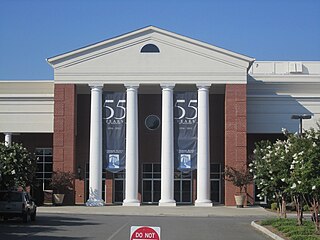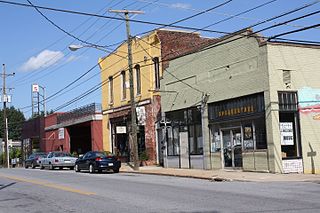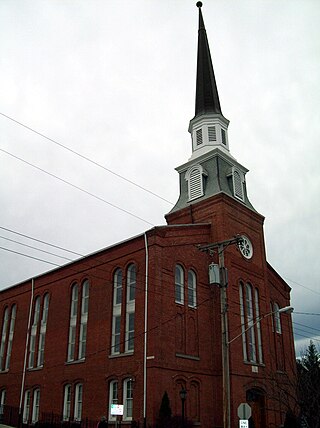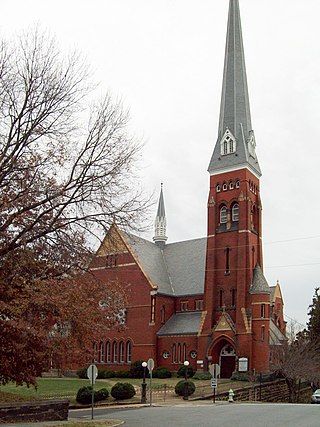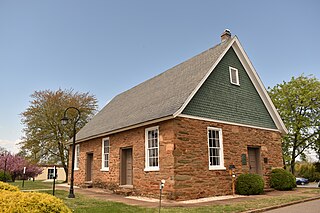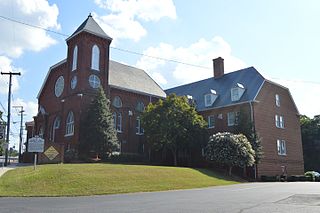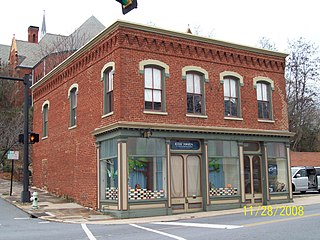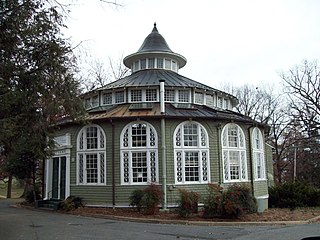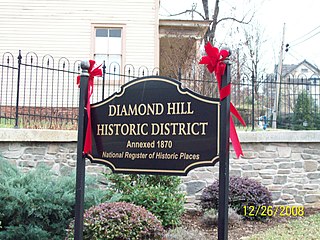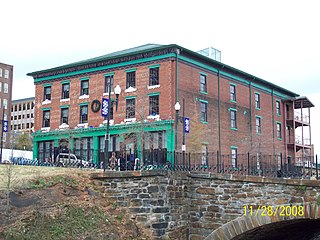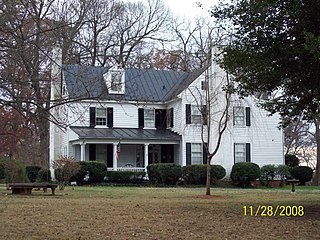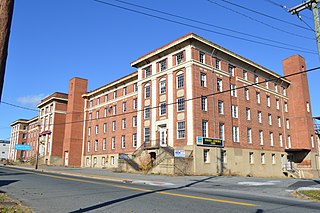14 Sights in Lynchburg, United States (with Map and Images)
Legend
Welcome to your journey through the most beautiful sights in Lynchburg, United States! Whether you want to discover the city's historical treasures or experience its modern highlights, you'll find everything your heart desires here. Be inspired by our selection and plan your unforgettable adventure in Lynchburg. Dive into the diversity of this fascinating city and discover everything it has to offer.
Sightseeing Tours in Lynchburg1. Thomas Road Baptist Church
Thomas Road Baptist Church (TRBC) is a Baptist megachurch in Lynchburg, Virginia, located on the campus of Liberty University, which it founded and is closely affiliated with. In 2016, a church spokesperson stated they had an average weekly attendance of 9,000. The pastor is Jonathan Falwell, the son of previous Senior Pastor Jerry Falwell and brother of former Liberty University President, Jerry Falwell Jr. In addition to a second campus, Dan River Church, Thomas Road also hosts a Spanish congregation on its main campus. It is affiliated with the Baptist Bible Fellowship International and the Southern Baptist Convention.
2. Fifth Street Historic District
Fifth Street Historic District is a national historic district located at Lynchburg, Virginia. The district encompasses 57 contributing buildings and 1 contributing object in a historically African-American section of Lynchburg. It includes a variety of residential, commercial, and institutional buildings, with about half dating to the period spanning from 1875 to 1940. Located in the district are the separately listed Kentucky Hotel, the Western Hotel, the William Phaup House, and the Pyramid Motors building. Other notable buildings include the Augustine Leftwich House, tobacco factories (1877-1885), the Humbles Building (1915), M.R. Scott Meat Market (1919), Miller Tire and Battery Company (1927), Adams Motor Company building (1927), Hoskins Pontiac (1951), Burnett Tire Company (1956), Moser Furniture Company building (1936), Fifth Street Baptist Church (1929), Community Funeral Home (1922), and Tal-Fred Apartments (1940).
3. Court Street Baptist Church
The tallest object on the downtown skyline of Lynchburg, Virginia, Court Street Baptist Church serves the black Baptist population of Lynchburg. Organized in 1843, the congregation—originally known as the African Baptist Church of Lynchburg—was the first of its kind in the city. The church was designed by R.C. Burkholder, and completed in 1880.
4. Academy of Music Theatre
The Academy of Music is a historic theatre building located in Lynchburg, Virginia. The three-story theater was built 1904–05 in the Beaux Arts style with a Neoclassical interior. It was designed by Frye & Chesterman. It is one of the only surviving legitimate theaters of the turn-of-the-century period in Virginia. Some of the more notable European and American names to appear on its stage included Ignace Paderewski, Anna Pavlova, Sarah Bernhardt, Alma Gluck, DeWolf Hopper, Otis Skinner, John Drew and Mrs. Patrick Campbell. In 2008, the Lynchburg Academy of Fine Arts received a $245,000 earmark from Representative Bob Goodlatte from the Community Development Fund of the United States Department of Housing and Urban Development, for renovations to the building.
5. First Baptist Church
First Baptist Church is a historic Baptist church located at 1100 Court Street, Lynchburg, Virginia. It is built of hard-pressed red brick on a rough granite foundation. The main facade of the church, facing Eleventh Street, and the two sides are centered with large rose windows framed within Gothic arches covered with hood moldings. Construction began in 1884 and the church was dedicated in 1886. In the 1920s, Lynchburg architect Stanhope S. Johnson designed the complementary Sunday School annex. In 1941, the interior of the sanctuary was modified by Stanhope S. Johnson, with the creation of a divided chancel. It is home to the oldest Baptist congregation of Lynchburg, established in July 1815. Current as of 2020, First Baptist Church is affiliated with the Cooperative Baptist Fellowship (CBF).
6. South River Friends Meetinghouse
The South River Friends Meetinghouse, or Quaker Meeting House, is a historic Friends meeting house located at Lynchburg, Virginia. It was completed in 1798. It is a rubble stone structure, approximately 30 by 51 feet, with walls 16 inches thick, and 12 feet high. The building was abandoned in the 1840s, with the Quakers of the region moving to Ohio due to economic hardship, and their moral opposition to slavery. The ruins of the building were utilized during the beginning of the Battle of Lynchburg, with Union troops camping near the ruins.
Wikipedia: South River Friends Meetinghouse (EN), Heritage Website
7. Lynchburg Museum
The Lynchburg Courthouse is a historic courthouse building located at Lynchburg, Virginia. Built in 1855, it occupies a prominent position overlooking the steeply descending steps of Monument Terrace. The building is executed in stucco-over-brick on a granite ashlar basement and is an example of the Greek Revival. The building is capped by a shallow dome located over the intersection of the ridges. At the top of the dome is a small open belfry consisting of a circle of small Ionic columns supporting a hemispherical dome. The front of the court house has a three-bay Doric portico.
8. Diamond Hill Baptist Church
Diamond Hill Baptist Church is a historic African-American Baptist church located at Lynchburg, Virginia. It was built in 1886, and is a three-story, L-shaped, brick church building in the Late Gothic Revival style. It has brick buttresses capped with limestone, Gothic pointed arched windows, a three-story entrance tower with steeple, and a jerkinhead roof. From 1958 to 1963 the pastor was Virgil Wood, the pastor most associated with the Civil Rights Movement in Lynchburg.
Wikipedia: Diamond Hill Baptist Church (EN), Heritage Website
9. Bragassa Toy Store
The Bragassa Toy Store is a historic commercial building located in Lynchburg, Virginia, United States. In 1871, Francisco Bragassa purchased the property and in 1875 to 1876, he built the confectionery and toy store in Italianate style. The Bragassa store was at the center of a new, expanding commercial section of town during the Reconstruction period. It is the only surviving building within a four-block area that represents this commercial expansion. The building contains comfortable living quarters upstairs, with the merchandise on the ground floor. At the front of the shop were the first plate glass windows ever installed in Lynchburg. The store remained in the Bragassa family until 1987. In January 1988 the Lynchburg Historical Foundation purchased the building from the Bragassa family. In November 2008, the building was occupied by Kid's Haven: A Center for Grieving Children.
10. Aviary
The Aviary is a historic aviary building located in Miller Park at Lynchburg, Virginia. It is a Queen Anne-style structure erected in 1902. The multi-sided exhibition house was designed by the local architectural firm of Frye & Chesterman. The building was a gift to the city of Lynchburg from Randolph Guggenheimer of New York City. When completed, the Aviary housed, "Seven cages containing monkeys, one with at least a half dozen healthy alligators, one with cockatoos, one with Australian doves, one with parrots and one with canaries." It later became a branch library and an office structure for the city Department of Parks and Recreation.
11. Diamond Hill Historic District
The Diamond Hill Historic District is a national historic district located in Lynchburg, Virginia. The district is irregularly shaped and approximately 14 blocks in area. It is wedged between the Lynchburg Expressway to the south and the city's central commercial core to the north. Most houses on Diamond Hill were erected during the late 19th and early 20th centuries and range from speculative houses to upper-middle-class residences. The more formidable residences line Washington and Clay streets and include a high number of Georgian Revival and Colonial Revival houses. Located in the district is the separately listed Diamond Hill Baptist Church.
Wikipedia: Diamond Hill Historic District (EN), Heritage Website
12. J. W. Wood Building
The J. W. Wood Building is a historic commercial building located at Lynchburg, Virginia. The 29,000-square-foot (2,700 m2) commercial building in a modified Greek Revival-style. It was built between 1851 and 1853 as a warehouse. It is the largest and best preserved of the few pre-Civil War commercial structures remaining in Lynchburg.
13. Samuel Miller House
The Samuel Miller House is a historic home located at Lynchburg, Virginia, United States. It is associated with Samuel Miller (1792-1869), a successful businessman and investor who was among the wealthiest men in the South during the years preceding the American Civil War. It is a large frame house erected between 1826 and 1829, and expanded and modified numerous times through the 20th century. Outbuildings consist of a cottage, stable, woodshed, and garage. The surrounding property was contested terrain during the siege of Lynchburg, when a cavalry skirmish occurred on the property.
14. Kemper Street Industrial Historic District
The Kemper Street Industrial Historic District encompasses a collection of industrial sites on Campbell Avenue and Kemper Street in Lynchburg, Virginia. It includes factory and related buildings on the southwest side of Kemper Street between 13th and 15th Streets, and similar buildings on the northeast side of Campbell Avenue between 12th and 14th, as well as the right of way of the Norfolk and Southern Railway that separates these two areas. Development of this area began in the early 20th century, with some fine Georgian Revival buildings, and saw a second round of development in the 1930s and 1940s.
Wikipedia: Kemper Street Industrial Historic District (EN), Heritage Website
Share
How likely are you to recommend us?
Disclaimer Please be aware of your surroundings and do not enter private property. We are not liable for any damages that occur during the tours.
